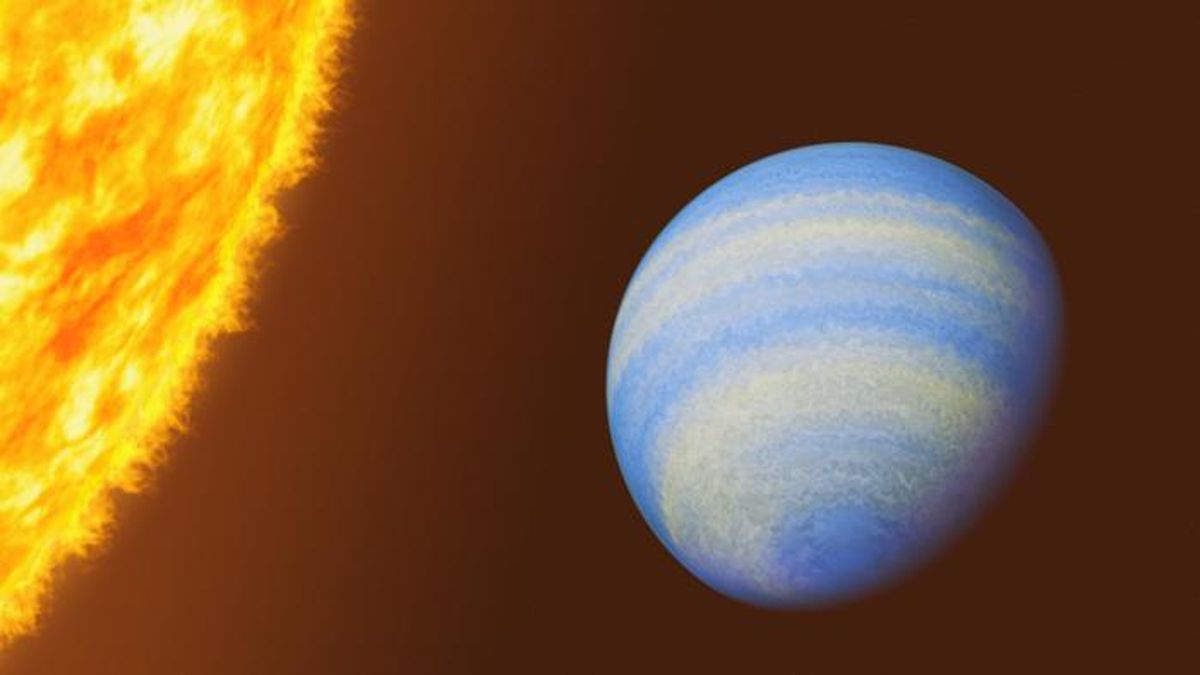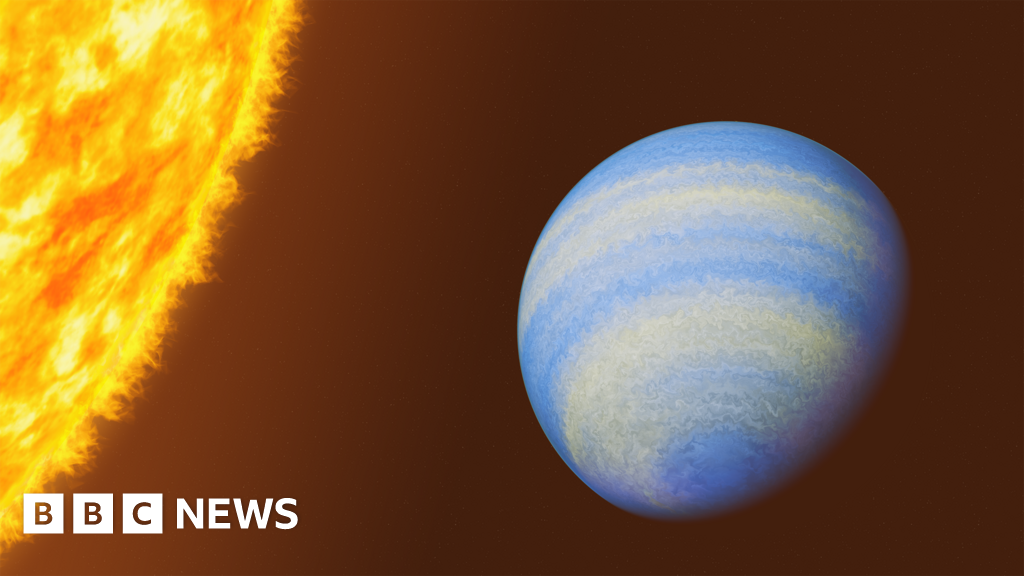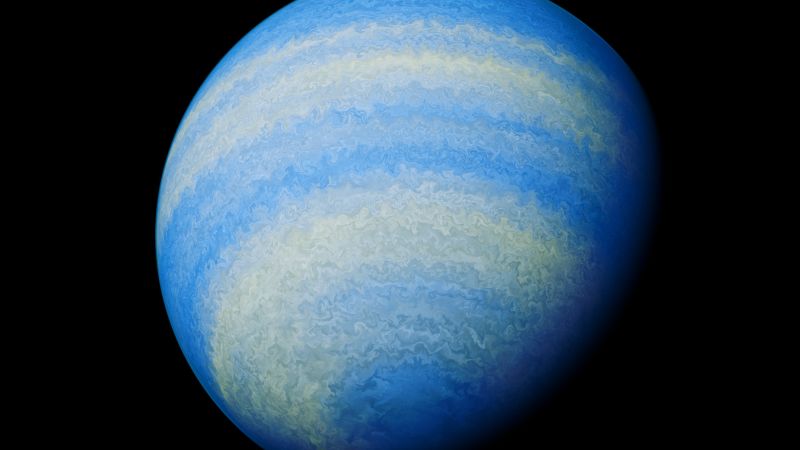Astronomers utilizing the advanced capabilities of the James Webb Space Telescope (JWST) have uncovered details about HD 189733 b, a hot Jupiter exoplanet situated approximately 65 light-years from Earth.
It is Known for its deadly rains of glass and extreme atmospheric conditions, this distant planet now adds another extreme characteristic to its list, it smells like rotten eggs due to the presence of hydrogen sulfide in its atmosphere.

Also Read: T Coronae Borealis Explosion to be Visible in 2024 After Eight Decades
Using JWST, scientists detected hydrogen sulfide, a molecule responsible for the stench of rotten eggs. Hydrogen sulfide is significant as it indicates the presence of sulfur, an important element in planetary formation.
Guangwei Fu, an astrophysicist at Johns Hopkins addressed that this is the first detection of hydrogen sulfide outside our solar system.
HD 189733 b is around 1.13 times the size and mass of Jupiter. The planet orbits its star at a distance of about 3 million miles (4.8 million km) completing an orbit in just 2.2 Earth days.
This proximity places HD 189733 b in the category of hot Jupiters, which are giant gas planets that orbit very close to their stars.
The planet’s atmosphere is extremely hot with temperatures reaching around 1,700 degrees Fahrenheit (927 degrees Celsius).
HD 189733 b is tidally locked meaning one side always faces the star resulting in a permanent dayside and nightside.
The extreme heat on the dayside vaporizes glass, which then condenses and rains sideways at high speeds due to the planet’s 5,000 mph (8,046 kph) winds.
The JWST detected water, carbon dioxide and carbon monoxide in the planet’s atmosphere. The presence of these molecules helps scientists understand the sources of the exoplanet’s oxygen and carbon.
The JWST investigation found that HD 189733 b lacks methane in its atmosphere. This discovery is with the understanding that the planet is too hot to sustain high concentrations of methane.
Sulfur is essential for forming complex molecules. The discovery of hydrogen sulfide and the measurement of sulfur content in HD 189733 b’s atmosphere contribute to a understanding of exoplanetary atmospheres.
Scientists aim to study sulfur’s role in other exoplanets to determine how its concentration varies with distance from the parent star.
HD 189733 b orbits its star extremely closely, at a distance 13 times nearer than Mercury’s orbit around the Sun. The exoplanet completes an orbit in just two Earth days.
The surface temperature of HD 189733 b reaches a 1,700 degrees Fahrenheit (925 degrees Celsius). Such high temperatures can melt certain types of rocks into magma.
Also Read: Polar Rain Aurora Observed from Earth for the First Time
The planet is known for its violent weather including molten glass rain that is blown sideways by winds reaching up to 500 mph (800 km/h) faster than the strongest hurricanes on Earth.
Previous studies hinted at various atmospheric components, but JWST’s new data has confirmed the presence of hydrogen sulfide in the atmosphere of HD 189733 b.
In addition to hydrogen sulfide, the atmosphere contains carbon dioxide, oxygen, water and heavy metals.
On Earth, this gas is produced by decaying organic matter and volcanic activity. Hydrogen sulfide had been detected in the atmospheres of Jupiter and Uranus within our solar system but had rarely been observed in quantities beyond it.
Guangwei Fu, the study’s lead author and an astrophysicist at Johns Hopkins University, addressed the importance of detecting hydrogen sulfide on HD 189733 b.
He said that this finding is a stepping stone for discovering similar molecules on other exoplanets. Understanding sulfur’s role is crucial since it is a vital element for constructing complex molecules and is essential for most life forms on Earth.
Astronomers are keen on understanding the levels of metals (elements heavier than hydrogen and helium) on exoplanets.
In our solar system, smaller ice giants like Neptune and Uranus have higher metal concentrations than larger gas giants such as Jupiter and Saturn.
The research on HD 189733 b supports the theory that a planet’s metallicity is correlated with its mass and radius.
HD 189733 b, being the nearest hot Jupiter observable transiting its star which has a unique opportunity for detailed atmospheric studies.
Since its discovery in 2005, this exoplanet has been a target for astronomers planning to understand the atmospheres of gas giants outside our solar system.
Also Read: Tianlong-3: Chinese Rocket Crashes After Accidental Launch During Ground Test





















